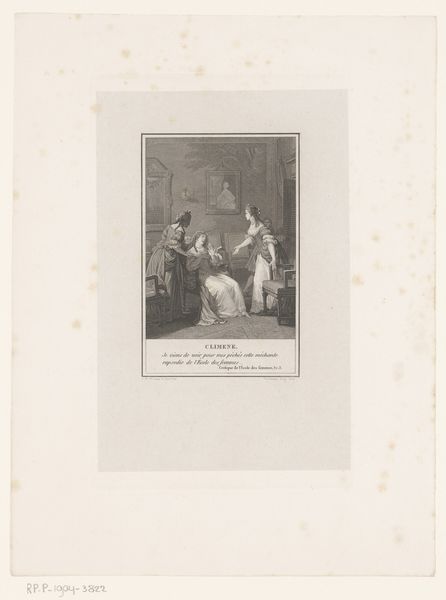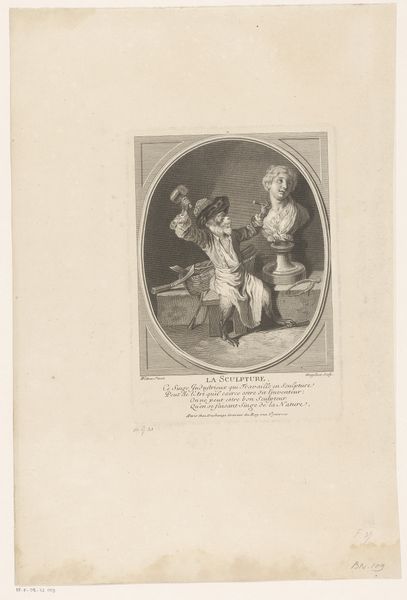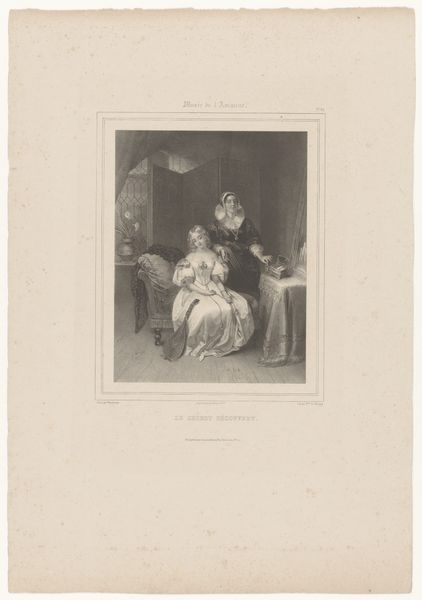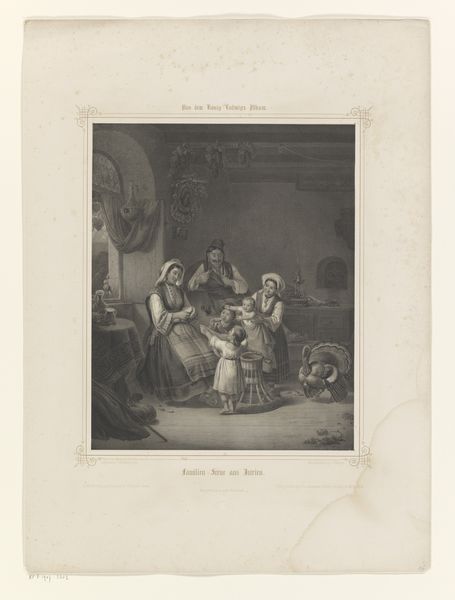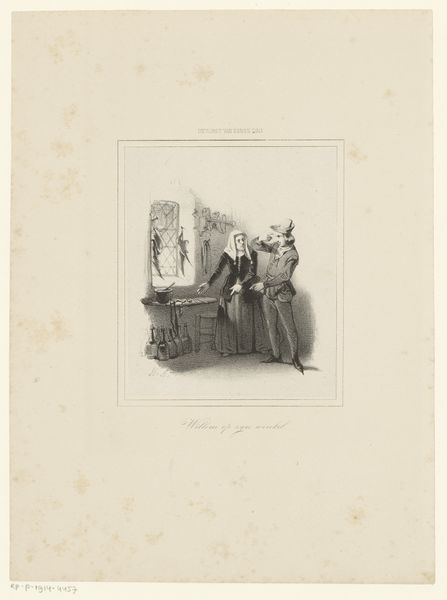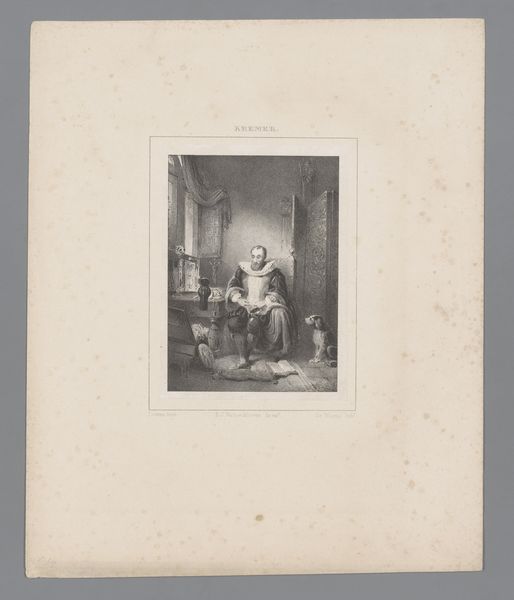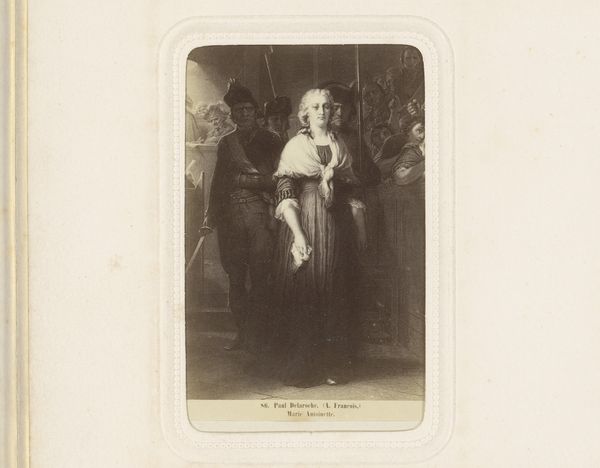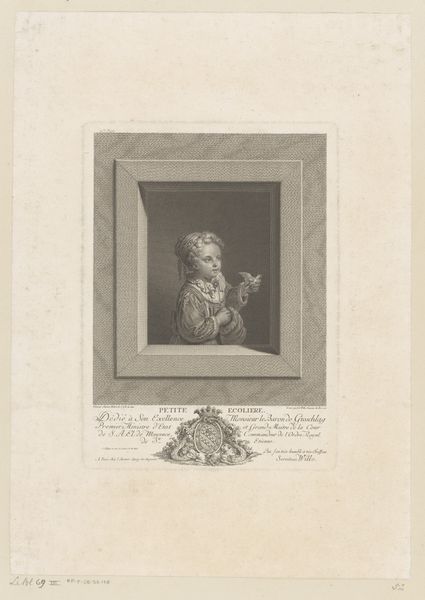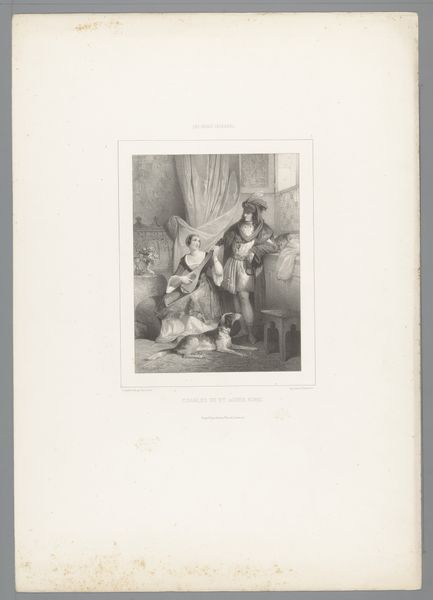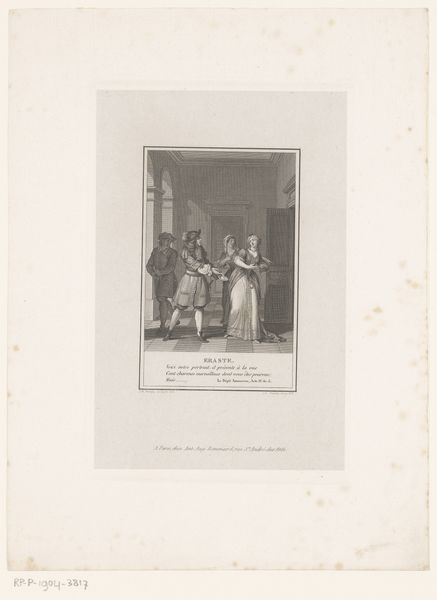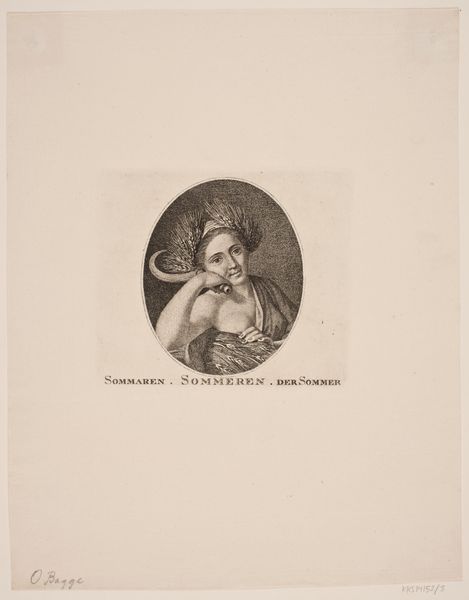
Dimensions: height 595 mm, width 440 mm
Copyright: Rijks Museum: Open Domain
Editor: This engraving from the 1850s, titled "Meisje met bloemen bij een portretbuste" by Franz Maria Ingenmey, depicts a girl adorning a portrait bust with flowers. It strikes me as such a sweet, intimate gesture captured in a very formal way. What do you see in this piece, considering its historical context? Curator: The sentimental portrayal speaks volumes about 19th-century Romanticism, particularly its fascination with childhood innocence and reverence for artistic legacies. Consider how the placement of the girl with the bust elevates a domestic scene, positioning the artist, through his image, within a pantheon of cultural figures. Editor: So, it's about more than just a girl and some flowers? It is trying to tell us how to position him as an artist? Curator: Exactly. Prints like this circulated widely, shaping public perception. It raises questions about the artist's ambition and the role of art in cultivating national identity. Notice the idealized presentation - the clean lines, the carefully arranged flowers. Who do you imagine purchased and displayed engravings like these? Editor: Maybe middle-class families who wanted to demonstrate their cultured tastes? Curator: Precisely. They served as status symbols and visual reminders of cultural values. Think about how the image's subject matter, the portrait bust itself, represents not just artistry but also notions of classical virtue and genius. And it does that within a common family setting, which I think it is kind of amazing. Editor: I hadn't considered all the layers of social meaning embedded in what seems like a simple image. The print served as a cultural artifact in its own right, influencing social status! Curator: Absolutely. It reminds us that art is never created in a vacuum. The image can offer insight to society’s priorities at that time.
Comments
No comments
Be the first to comment and join the conversation on the ultimate creative platform.
